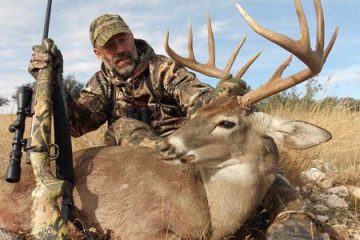You’re Kidding Me, Right?

You’re Kidding Me, Right?
By Bob Humphrey
After 40-some years of hunting, studying and managing them, very little that involves white-tailed deer truly surprises me anymore. Thus, I was really taken for a loop by a thread I encountered recently on social media.
The original post – on a Facebook page dedicated to deer hunting – was by some know-it-all (or so I first thought) who felt obligated to inform his fellow deer hunters of the fact that male deer sport antlers, not horns. My initial reaction was: “Thank you, Captain Obvious.” After all, this little factoid is so basic and simplistic – along the lines of: the sun rises in the east and sets in the west and, you can’t tell a deer’s age by the number of points on its rack – that I’ve always merely took it for granted anyone and everyone old enough to carry a rifle into the woods already knew it. Get ready for a shocker.
The first few comments were along similar lines. “Well, yeah,” and “Um, duh.” Next, the armchair biologists chimed in with tid bits about how antlers grow and fall off every year and the way they differ from horns. Then the thread started to shift, with comments like: “Then why do they call it a spikehorn?” and “Spikehorn, forkhorn, they’re horns.” At first I thought folks were joking. Some were, but as the discussion continued I suddenly realized some were not! It was incomprehensible to me that adults, people who have passed a hunter safety course and who walk around the woods with loaded firearms claiming to be deer hunters really didn’t know the difference between antlers and horns. I began to wonder what else they didn’t know.
When you learn to play baseball you start with the basics like, “take that long skinny thing and hit that round thing,” which is then followed up with, “Run to first base first.” Then you move on to learning three strikes makes out and three outs end an inning. It’s not until later that you learn the tactics and strategy of the game, like how to hit a curve ball and when to play your middle infielders in.
While knowing deer have antlers and not horns doesn’t necessarily improve your odds of bagging one, it is about on a par with, “take that long skinny thing and hit the round thing,” or “load your gun with the pointy end of the bullets facing away from you.” Learning to recognize rubs and scrapes is about like running the bases and knowing when and how to hunt them is more tactics and strategy.
I’ve written three books, chapters for several more and literally thousands of magazine articles about hunting. My editors have always told me to write for a tenth grade level. Though I don’t always adhere to that advice, I at least try to keep it in mind. And when I veer away from it I usually trend toward the upper direction. After following the aforementioned thread I might have to seriously re-think that strategy.
Rather than informing my readers how to tell a mature buck from an immature one by comparing the diameter of its antler bases to the diameter of its eyes, I might have to simply point out, deer grow antlers, not horns. Rather than advising them on how to quickly field judge the score of a buck by looking at number of points, beam length and inside spread, maybe I should just point out, you can’t tell how old a buck is by counting his points.
You have to learn to walk before you can run. Deer don’t always walk into the wind. If they did, they’d all eventually end up in the Pacific Ocean. And they don’t always drop on the spot when you shoot them. Sometimes you have to go over and look for evidence of a hit, and possibly follow their trail for some distance before you find it.
Whitetails are fascinating creatures. If you want to be more successful at hunting them and get more out of the experience you have to learn as much as you can about your quarry, but at the same time accept the fact it’s a school where the lessons never end.



0 Comments